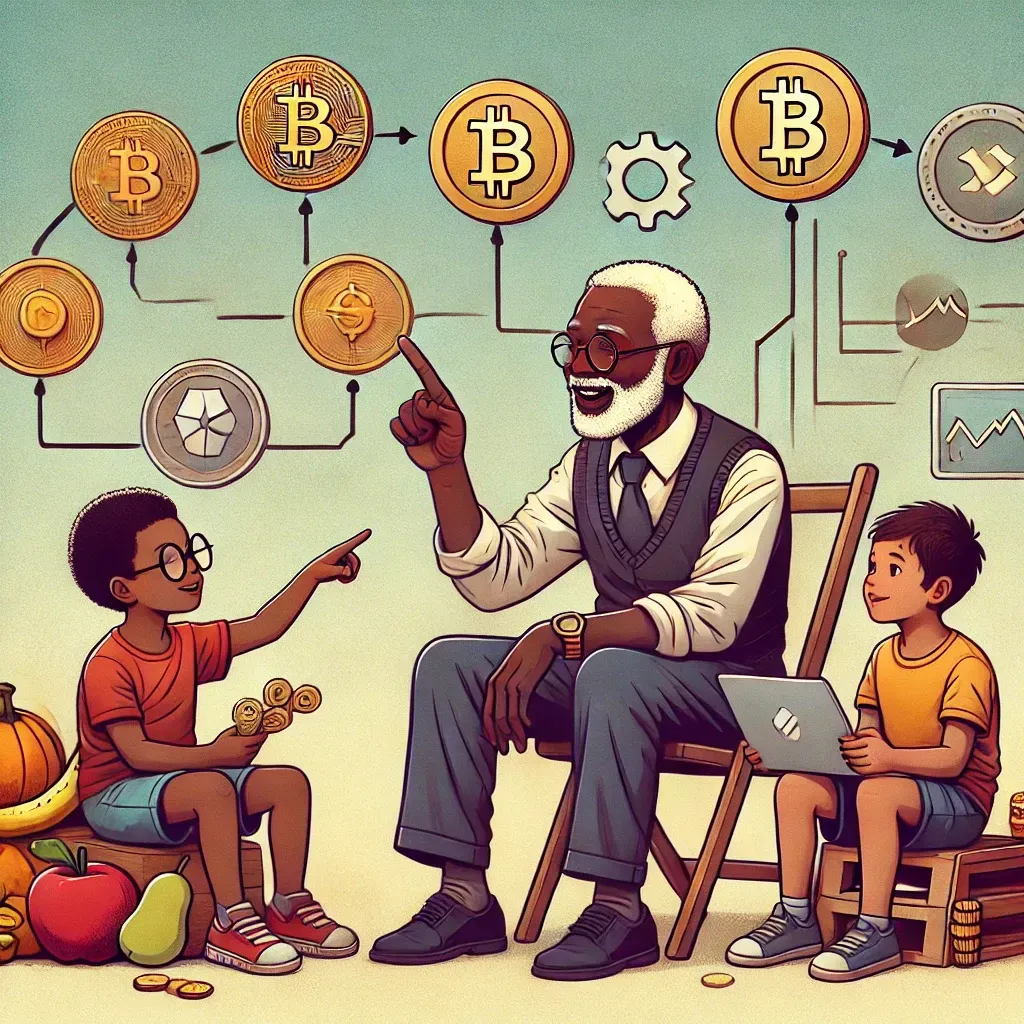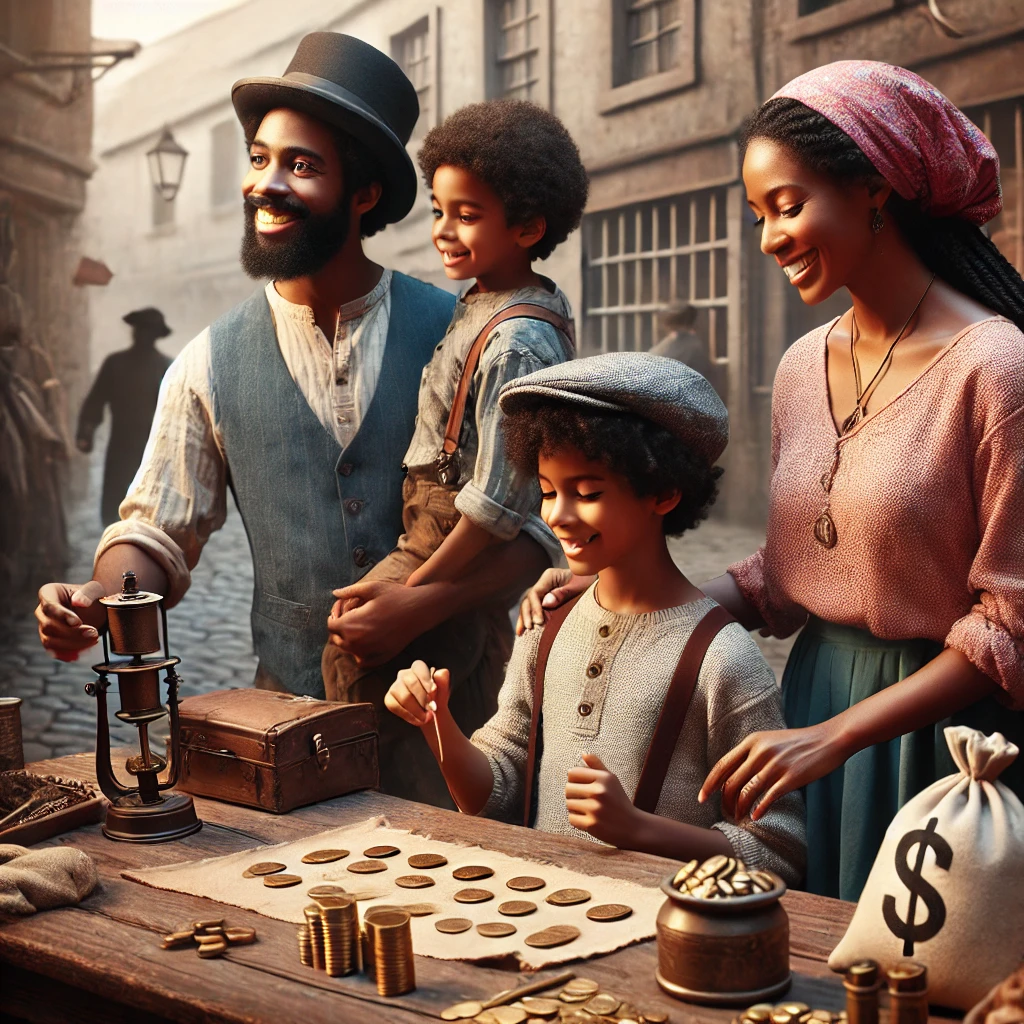
The History of Money: How We Went from Bartering to Bitcoin
Money is something we use every day, but have you ever wondered how it all started? Before we had paper bills, coins, or credit cards, people had to trade goods and services to get what they needed. Over time, money has changed from simple bartering to digital currencies like Bitcoin.
Understanding the history of money helps us see why financial systems work the way they do today and how they might evolve in the future.
✅ Learn how money started and why it was created
✅ Discover the different forms of money throughout history
✅ Understand how digital money like Bitcoin is changing the world

Let’s take a journey through time—from bartering to Bitcoin!
1. The Barter System: Trading Without Money
Before money existed, people used bartering—exchanging goods and services directly.
📍 Example:
A farmer who grew wheat might trade some of his wheat for fish from a fisherman.
💡 Why It Worked:
✔ No need for cash—just trade what you have for what you need.
✔ Simple system for small communities.
❌ Problems with Bartering:
Double coincidence of wants – Both people must want what the other has.
Hard to measure value – Is one cow worth 50 apples?
Because bartering was inconvenient, societies needed a better way to trade—this led to the first forms of money.
2. Early Forms of Money: Shells, Stones, and Metals
To solve bartering’s problems, early societies started using objects as money. These objects had to be:
✅ Recognizable – Everyone agreed they had value.
✅ Durable – Wouldn’t break easily.
✅ Portable – Easy to carry.
✅ The First Forms of Money:
🐚 Cowrie Shells – Used in China, Africa, and the Pacific Islands for centuries.
💎 Precious Stones – Some societies used gems and beads as currency.
🪨 Large Stone Discs (Rai Stones) – Used on the island of Yap in the Pacific Ocean.
📍 Example:
If you lived in ancient China, you might use cowrie shells to buy rice or clothes.
But as trade grew, people needed something more practical and valuable—this led to metal money.
3. Coins: The First Standardized Money
Around 600 BCE, the first metal coins were created in Lydia (modern-day Turkey). These were made from gold and silver and had a set value, which made trading easier.
📌 Why Coins Were a Game-Changer:
✔ Same value everywhere – A gold coin was worth the same no matter where you went.
✔ More durable than shells or stones.
✔ Easier to carry and use in trade.
📍 Example:
Ancient Romans used denarius coins to buy food, clothes, and land.
As trade expanded, carrying heavy bags of coins became inconvenient, leading to the next big leap—paper money.
4. Paper Money: A Revolutionary Idea
China was the first country to introduce paper money during the Tang Dynasty (7th century CE). By the 11th century, the Song Dynasty had a full paper money system backed by the government.
📌 Why Paper Money Was a Big Innovation:
✔ Lighter and easier to carry than metal coins.
✔ Governments could produce more currency when needed.
Other countries adopted paper money much later—Europe didn’t widely use it until the 1600s!
📍 Example:
The first U.S. paper money was printed in 1690 in Massachusetts.
Even though paper money made life easier, it was still backed by gold and silver—until the world moved to a fiat money system.
5. The Gold Standard & Fiat Money
For most of history, money was backed by gold or silver—meaning you could exchange paper money for a certain amount of gold.
📌 The Gold Standard:
✔ Each dollar had a fixed value in gold.
✔ Countries used gold reserves to back their currencies.
However, in 1971, the U.S. stopped using the gold standard, making all money “fiat” currency—meaning it has value because the government says so.
📍 Example:
Today, a $100 bill is valuable not because it’s backed by gold, but because everyone agrees it has value.
With the rise of technology, the way we use money changed forever—leading to credit cards, digital payments, and cryptocurrencies like Bitcoin.
6. The Digital Money Revolution: Credit Cards, PayPal, and Bitcoin
As the internet grew, cash became less important, and people started using digital money.
📌 Modern Digital Money Systems:
💳 Credit & Debit Cards – Make payments instantly without cash.
💻 PayPal & Venmo – Send and receive money online easily.
₿ Bitcoin & Cryptocurrencies – Decentralized digital money that doesn’t need banks.
✅ What is Bitcoin?
Bitcoin is a digital currency created in 2009 that allows people to send money directly without banks.
📌 Why Bitcoin is Different:
✔ No physical form – It exists only on computers.
✔ Decentralized – No government controls it.
✔ Secure & transparent – Transactions are recorded on a blockchain.
📍 Example:
Some companies accept Bitcoin as payment, just like regular money!
7. The Future of Money: What’s Next?
As technology improves, money will continue to evolve. Some experts predict that in the future, we may:
📌 Use only digital currencies – No more cash, only digital transactions.
📌 Rely on cryptocurrency – Bitcoin and other cryptos may replace traditional money.
📌 Have AI-powered financial systems – Automated, smart payments could make transactions easier.
💡 What This Means for Kids:
Learning about money early helps kids understand saving, investing, and financial independence.
Conclusion: Teaching Kids About Money is Essential
From bartering to Bitcoin, money has come a long way. Teaching kids about the history of money helps them:
✅ Appreciate how money works today.
✅ Understand the value of saving and investing.
✅ Prepare for the future of digital currencies.
And the best part? Your child can start learning about money right now!
🚀 Download the Jasiah’s Money eBook – Instant Digital Download! 🚀
📚 Fun, engaging lessons on money, saving, and investing!
💰 Perfect for teaching kids the importance of financial literacy!
💡 Includes interactive activities and real-world money lessons!
👉 Click here to get your instant digital download now!
🔗 www.childrentowealth.com/product-details/product/jasiahsmoney
Give your child the gift of financial knowledge—start today! 🚀💰
